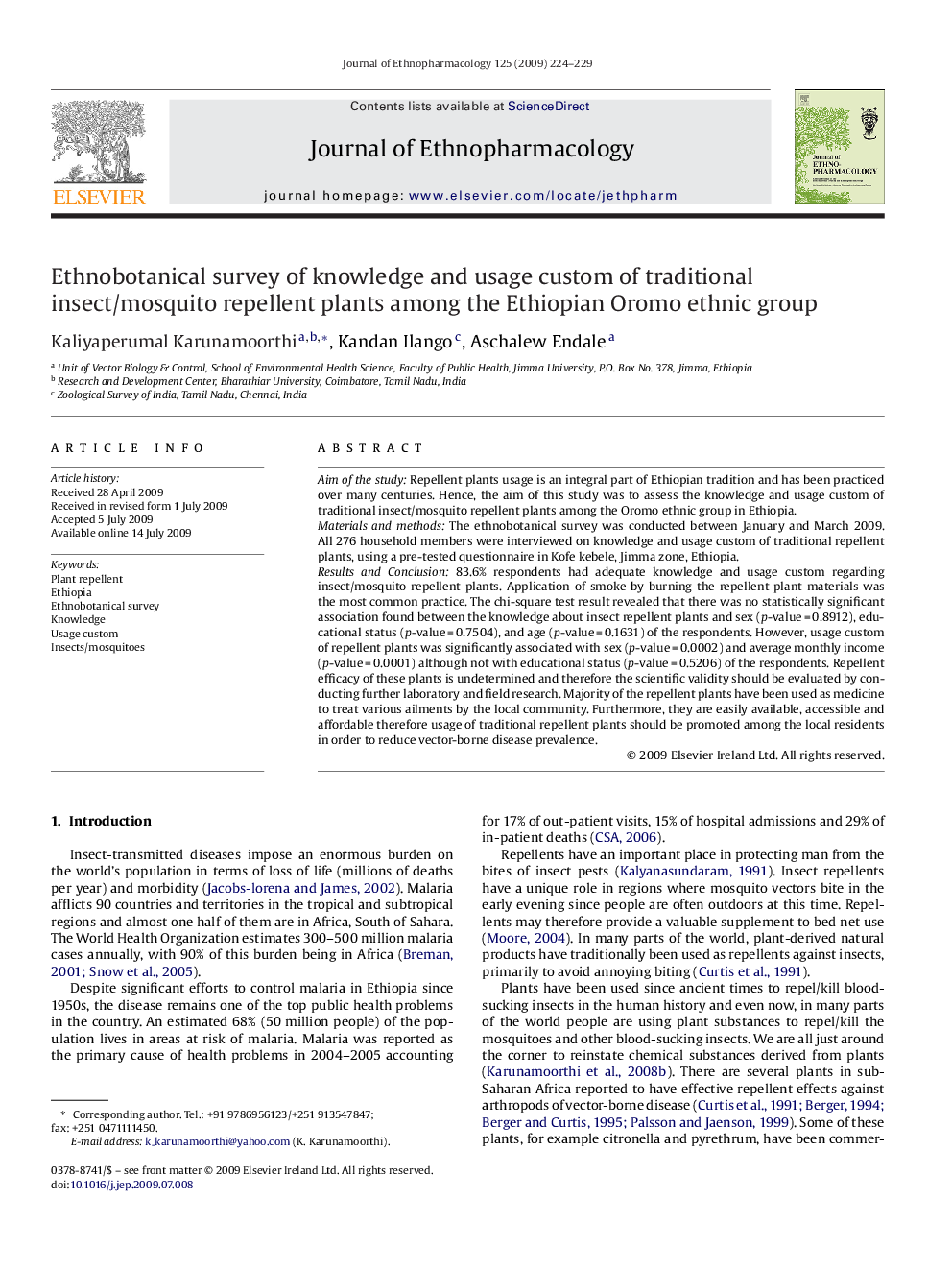| کد مقاله | کد نشریه | سال انتشار | مقاله انگلیسی | نسخه تمام متن |
|---|---|---|---|---|
| 2546242 | 1124020 | 2009 | 6 صفحه PDF | دانلود رایگان |

Aim of the studyRepellent plants usage is an integral part of Ethiopian tradition and has been practiced over many centuries. Hence, the aim of this study was to assess the knowledge and usage custom of traditional insect/mosquito repellent plants among the Oromo ethnic group in Ethiopia.Materials and methodsThe ethnobotanical survey was conducted between January and March 2009. All 276 household members were interviewed on knowledge and usage custom of traditional repellent plants, using a pre-tested questionnaire in Kofe kebele, Jimma zone, Ethiopia.Results and Conclusion83.6% respondents had adequate knowledge and usage custom regarding insect/mosquito repellent plants. Application of smoke by burning the repellent plant materials was the most common practice. The chi-square test result revealed that there was no statistically significant association found between the knowledge about insect repellent plants and sex (p-value = 0.8912), educational status (p-value = 0.7504), and age (p-value = 0.1631) of the respondents. However, usage custom of repellent plants was significantly associated with sex (p-value = 0.0002) and average monthly income (p-value = 0.0001) although not with educational status (p-value = 0.5206) of the respondents. Repellent efficacy of these plants is undetermined and therefore the scientific validity should be evaluated by conducting further laboratory and field research. Majority of the repellent plants have been used as medicine to treat various ailments by the local community. Furthermore, they are easily available, accessible and affordable therefore usage of traditional repellent plants should be promoted among the local residents in order to reduce vector-borne disease prevalence.
Journal: Journal of Ethnopharmacology - Volume 125, Issue 2, 7 September 2009, Pages 224–229